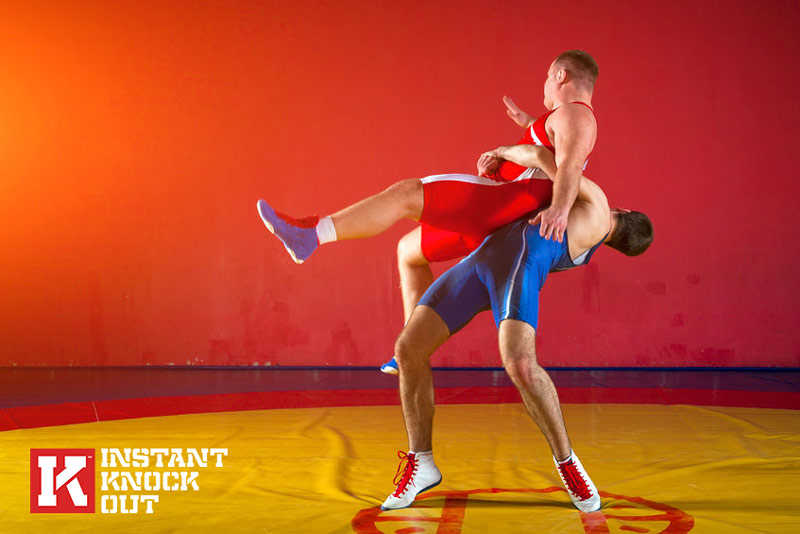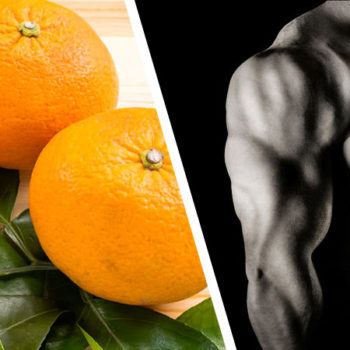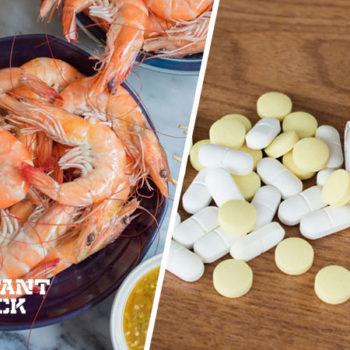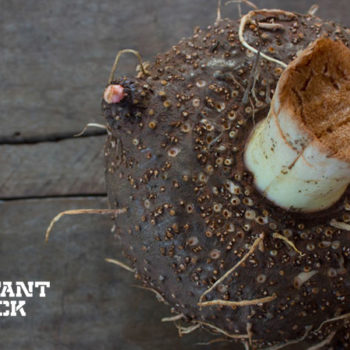Nutrition for Grapplers: Keeping Lean and Powerful

Grappling is without a doubt one of the toughest sports any guy or girl can take part in. In order to reign victorious, athletes must battle it out in intense bouts of physical confrontation and subdue a resisting opponent – making good nutrition vital.
Therefore, a grappler must have a body that is lean, powerful and perfectly primed for action. This is only possible through an intense regimen of training and pin-point dietary precision.
Competitors must be able to sculpt and shape their physique in such a way that they are powerful enough to overcome adversary. However, excess bulk and bodybuilder-esque muscle structure does not always translate well on the mats.
That’s because in the world of modern grappling athletes must be fast and nimble. There is no game faster than an elite level submission match, or the finals of an NCAA wrestling meet. In the blink of an eye, almost anything can happen.
Nutrition for grappling means far more than simply making weight. It is all about eating in the best possible way to ensure nothing less than peak performance. Present and future champions train to be the best, so why shouldn’t they feast to be the best also?
What This Guide Offers Athletes
- An understanding of the importance of nutrition
- What foods to eat
- When to eat them
- How to optimize health
- The best way to stay lean
- How to stay powerful
The Importance of Optimized Nutrition
Elite level grapplers achieve success for their performances out there in the sporting arena. Prizes are not handed out for aesthetics and neither are Olympic invites. Therefore, the nutrition these fighters need far exceeds a typical diet plan set up for superficial values.
They must eat purely with performance in mind. This means balancing their macros, absorbing all the essential vitamins and supplementing with well researched products.
Unlike the standard athlete, a grappler must always maintain their mass. Missing weight not only looks un-professional, but can mean instant disqualification. This can be devastating for an athlete who has spent months exchanging blood, sweat and tears for a shot at success.
Every calorie a weight-class athlete consumes should count towards their goal. As the judgement day of competition draws closer, what a fighter chooses to put into their body becomes increasingly important.
By optimizing their nutrition an athlete can ensure they’re ready to tackle any and all tough workouts head on. They’ll also be safe in the knowledge they’ll not crumble early from fatigue, when fighting the iron like grips of a hungry opponent.
Food Focus
When seeking out foods to fuel their bodies, grapplers should see this time as an opportunity to benefit their game. This is easily achieved by keeping food focused around:
- Staying healthy
- Keeping lean
- Developing a powerful edge
- Endurance
Health should always be the primary focus of anybody who competes. Taking any other route to success will typically end in a short lived career and lasting side effects.
Poor decision making and drastic weight cuts has left many a great wrestler unable to produce healthy amounts of testosterone, even in their thirties. Not only that, but there are multiple cases of athletes young and old dying during the weight cutting process.
Also, it would be wise to add that even fighters can grind their metabolism to a halt. If weight management isn’t handled correctly it becomes harder and harder as athletes age. Severely restricting calories and starving the body for a short term goal can leave long term damage.
Therefore, this guide will focus purely on positive and proven nutrition knowledge.
Tip: When eating, consider what that specific food choice is doing to your body. Try to aim for things that will empower your career and support your hard work.
Creating a Grappler’s Diet
As we have learned our primary objective as a mat dominant athlete is to stay both lean and powerful.
By now, we know to stay away from highly processed junk food and that we must eat to perform.
But what how should a grappler create an optimal diet? What should they eat, and when should they consume it?
The following is a very short and comprehensive list outlining an athletes daily needs:
- 1.4-2.0 g of protein/per kg of body weight/per day [1]
- Eat a wide variety of fruits and vegetables
- Consume nutrient dense carbohydrates around training times
- Healthy fats to support the joints and central nervous system (30% of overall cals/day)
- Supplement with well-tested products when necessary
- Drink plenty of water throughout the day and at least one litre post-training
The Mesomorph Meal Plan
A mesomorph is a person with a typical athletic figure that is neither naturally big nor small. These people do not usually find it hard to stay lean and can easily gain muscle.
If you are reading this thinking, “Hey, that’s certainly not me…” then don’t worry. If you tend to carry a little extra weight then reduce the amount of carbs by 1/2. On the other hand, if you’re a hard gainer, increase the suggested carbs again by 1/2.
In order to make up for this carb compensation these two body types should adjust their fat levels. Ectomorphs should aim to half their amount of fat, whilst endomorphs can afford to increase their’s by 50%.
As every individual varies in size, stature and composition, we will use the hand measuring method. Grab a cupped handful as an ingredient and count it as one unit. If you want to weigh everything by the gram, go ahead, our chosen method is just easier.
Here’s a basic idea for what a Judoka or Jiu Jitsu player should eat before stepping onto the tatami:
| Food Type | Serving Size | Ingredient Examples | ||
|---|---|---|---|---|
| Protein | 2 palm fulls | Chicken Breast, Turkey Mince, Salmon, Lean Beef (93%+), White Fish, Beans (Black Beans/Kidney Beans etc.), Tofu, Tempeh | ||
| Vegetables | 2 fist sized portions | Broccoli, Green Beans, Kale, Spinach, Tomatoes, Cauliflower, Spinatch, etc. | ||
| Complex Carbohydrates | 2 cupped handfuls | Sweet Potato, Brown Rice, Yams, Wholegrain Pasta, etc. | ||
| Healthy Fats | 2 thumb sized portions | Nuts (Cashew, Brazil, Almond, etc.), Avocado, Peanut Butter, Flax Seeds, Olive Oil, etc. |
Dr. John Beradi is a keen advocate of grapplers utilising P+C drinks as intra-workout nutrition. He says that they should comprise of “rapidly digestible protein (whey protein or whey protein hydrolysates) and carbohydrates (dextrose or maltodextrin).” [2]
He states that those looking for a competitive edge should drink liquids diluted to concentrations of 6-12%. These should contain approximated 0.8g of carbohydrate per kilo of body mass, and 0.4g protein per kilo of body mass.
According to Dr. Rob Wolfe, BCAA’s (Branched Chain Amino Acids) and EAA’s (Essential Amino Acids) should also be included to help fascilitate muscle protein synthesis. [3]
Tip: Try to prep meals beforehand and batch cook if you’re planning on being away from the kitchen. This will ensure you maintain optimum nutrition throughout the day and can easily say no to poor food choices.
Keeping Lean
As mentioned, in order to be eligible for competition, nearly all grapplers have to step onto the mat at an agreed weight. IBJJF Brazilian Jiu Jitsu competitors for example hit the scales just moments before their match has begins.
This means carrying excess mass is not a wise option, especially for lighter weight fighters. That’s why it’s important for competitors to learn how to optimally order their nutrition, and take hold of the physical edge.
According to an article posted in the coveted Strength & Conditioning journal; “Grapplers benefit from increasing lean body mass while minimizing percent body fat to maintain a weight class.” To put it into perspective, world class Judo athletes are typically <10%. [4]
The high strength to mass ratio being lean presents is the reward for a well kept diet. Simply put, a combatant who steps onto the mat with low body-fat makes weight with the most powerful muscle they can muster.
Carrying excess pounds in the way of useless fat creates extra work for a grappler. Whilst already dealing with the exhausting attacks of another human, they’re also fighting gravity with their own weight. Kind of like wearing a weighted vest into the match.
Developing a Powerful Edge
Power plays a key role in grappling sports. Typically, the most powerful athlete holds a weighty advantage over their opponent. [5] Here’s why…
Not only can they move faster, but they can react faster too. Imagine the dying seconds of a collegiate wrestling match. The score cards are even, and both wrestlers are looking for a takedown to win.
The athlete possessing the most potential to explode will in theory be able to blast through their opponent with greater effect than the reverse. He or she will be able to use their superior power to reach positions quicker, strike harder and drive with more force.
This means a grappler must support the growth and maintenance of lean muscle mass. So whilst it is important to spend time progressing in the gym, equal effort must exist in the kitchen too. We should aim to always eat correctly and keep performance paramount.
Special attention should paid to the consumption of sufficient protein, branched chain amino acids and essential amino acids. Without these nutrients, athletes run the risk of muscle atrophy after a hard workout. Protein is essential macronutrient and should be consumed at every feed.
Endurance
In the training room a grappler must ensure they are fuelled sufficiently enough to make the most of their practice time. Sessions can last anywhere from 45 minutes to multiple hours and vary greatly in intensity.
Starvation methods used by desperate dieters will therefore not work for the wrestler. Yes, they will lose weight and maybe make a weight class, that’s a given. But will they be able to endure the length of a tough Judo grip fight battle? Probably not.
A balances approach to macros is the key for peak athletic endurance. That is because the grappler’s body primarily chooses carbohydrates and fats for energy. Protein, the remaining macro, is integral for muscle regeneration and recovery between sessions/matches.
If the grappler is able to find the right foods that help them endure a tough practice then the same meals should be taken on competition day. Evidence suggests that a meal based around high quality complex carbohydrates and lean protein will typically support endurance. [6]
The closer a grappler gets to a match or practice, the smaller a feed should get. Too large a pre-competition meal is a bad idea, as blood will away from the muscles to supply the digestive system. Therefore, carbohydrate based drinks or high GI snacks can be used instead.
Supplements
As we have already discussed a grappler should always prioritize healthy whole foods over supplements. However, supplementation has played an important role in the development of many athletes for years and is a widely encouraged practice.
Grapplers specifically should look towards supplements that’re thoroughly testes and proven to increase performance on the mat. A few examples include:
- Creatine Monohydrate
- Fat Burners
- Protein Powders and Bars (Whey, Casein, Brown Rice, Soy, etc.)
- BCAA’s (Powders, Pills, Capsules)
- EAA’s (Powders, Pills, Capsules)
Protein, BCAA’s and EAA’s
Protein, BCAA’s and EAA’s have already been mentioned so we will not go into too much detail here. The key thing to remember is that a supplement should not replace a high quality lean protein source.
However, during training or immediately before and after a meal cannot possibly be consumed without side effects. This is a perfect opportunity to ingest these nutrients in the form of a beverage.
Creatine Monohydrate
Creatine monohydrate is one of the most rigorously tested supplements used in sports nutrition. It has been proven to be effective in increasing creatine storage, which means faster regeneration of ATP during intense between high intensity exercise. [7]
ATP, properly known as adenosine triphosphate, is the fuel athletes use whilst employing explosive movements. Think Olympic lifting, 100m sprinting or for grapplers, a high powered Judo throw.
Therefore, as grapplers, creatine supplementation is advised for increased athletic performance. Plus it is a great tool for optimizing cognitive function, as proven in a study of 281 individuals who saw improvements in short term memory. [8]
Fat Burners
Fat burners are a popular supplement used by many an athlete who competes with a weight class. If used correctly, they are a safe and effective way of promoting healthy fat loss, providing energy and safely managing hunger.
The top fat burners are created using foods, nutrients and vitamin compounds proven to help promote weight loss in a natural way. For example, capsaicin, a group of chemicals that make chili peppers hot, is a common ingredient.
In an study published in 2014, [9] it was found that capsaicinoids help to support weight management. This is because of increased thermogenesis, which speeds up the body’s want to burn excess calories.
Final Thoughts
The nutritional aim of the grappler should always to turn their body into the best shape it could ever be. Through working hard during practice, eating right and sleeping well, the athlete does everything in their power to support their journey.
A key component to remember is the importance of clean and nutritious whole foods. Although they typically take longer to prepare, they’re much better for our bodies than cheap fast food and low quality alternatives.
Small frequent meals meals may prove to be effective for those who train hard multiple times throughout the day. Food can be digested easier, lean mass can be preserved, and all the essential energy needed can be quickly called upon even when dieting. [10]
Aim to eat every two to three hours throughout the day. Make sure to include a bunch of lean protein into opportunity to take in food and save the carbs for pre-workout energy and post-workout recovery.



